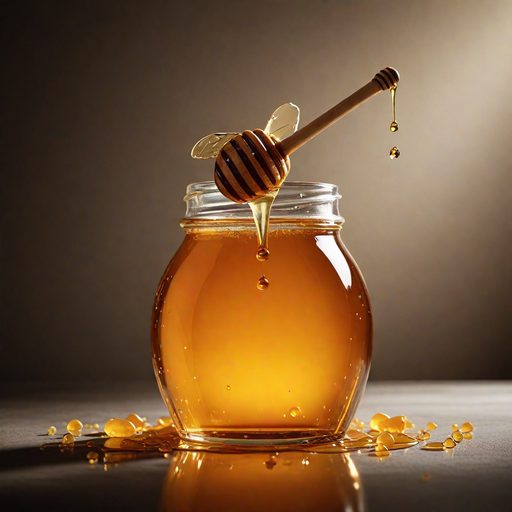
The expiry date of honey worries no one
Recommended for Preparatory Grades
In the heart of every golden drop of honey lies a secret – a tale whispered by ancient tombs and confirmed by modern science. Honey, nature’s ambrosia, doesn’t merely age; it transforms, much like a fine wine maturing with time. But unlike wine, its essence remains untouched by the passage of years. Let’s delve into the fascinating world of honey’s near-eternal shelf life and the “best before” dates that grace its jars.
No, pure honey doesn't spoil in the traditional sense. It might crystallize or darken over time, but it remains safe to consume.
This indicates the period when honey is at its peak flavor and texture. After this date, it can still be eaten, but its qualities might change slightly.
Honey is a dynamic substance with natural sugars and enzymes. These undergo changes, especially with temperature fluctuations, leading to crystallization or darkening. Does honey truly expire?
Why does honey change over time?
The Ancient Whisper of Immortality
Imagine yourself an archaeologist, unearthing a hidden chamber in an Egyptian tomb. Among the relics lies a sealed jar, its contents surprisingly intact: honey, millennia old yet still edible. This isn’t fiction; it’s a testament to honey’s exceptional longevity. The ancient Egyptians, master embalmers, recognized honey’s preservative properties, using it to embalm the dead and as a sweetener in their daily lives.
So, what makes honey practically immortal? The answer lies in its unique composition: * Low water content: Bacteria and other microbes need moisture to thrive. Honey’s low water content creates an inhospitable environment for them. * Acidity: Honey has a naturally acidic pH, further deterring microbial growth. * Hydrogen peroxide: Honey contains a small amount of hydrogen peroxide, a natural antibacterial agent.
Think of a jar of honey as a time capsule, preserving a snapshot of nature’s bounty. Each spoonful carries the essence of the flowers from which it was gathered, unchanged by time’s relentless march.
The “Best Before” Conundrum
“Best before” dates are often misunderstood as expiration dates. With honey, they merely signify when it’s at its prime – most vibrant in color, aroma, and texture. This doesn’t mean the honey has turned bad after this date; it’s simply evolved.
As honey ages, its natural sugars can crystallize, giving it a grainy texture. Its color might deepen, and its aroma might become more pronounced. Some even prefer the complex flavors that develop with time, much like aged cheese or whisky.
The “best before” date is like the changing seasons. It marks a transition, not an ending. Like autumn leaves turning golden, honey evolves, retaining its essence while embracing a new form.
Pure Honey’s Tale of Change
Have you noticed pure honey darkening over time? This isn’t a sign of spoilage; it’s a badge of authenticity. Pure honey contains natural enzymes and pollen, which react with oxygen and gradually darken the honey. In contrast, processed honey is often filtered and heat-treated, halting these natural processes and keeping the honey light in color.
Imagine pure honey as a wise old sage, its darkening complexion a testament to the experiences it has gathered over time. It whispers stories of blooming flowers, buzzing bees, and sun-drenched meadows.
“The Only Constant Is Change…”
Honey’s transformation is a reminder that change is the essence of life. Embrace the subtle shifts in its color, texture, and aroma as part of its natural journey.
In a world obsessed with expiration dates, honey stands as a timeless exception. Its “best before” date is merely a suggestion, a gentle nudge to savor its peak freshness. But remember, even after this date, honey remains a precious gift from nature, ready to nourish and delight.
So, the next time you reach for that jar of honey, take a moment to appreciate its history, its complexity, and its enduring magic. Savor the sweetness of the past, present, and future, all encapsulated in a single golden drop.
Watch a video
Buzz into Fun with the Honey Bee Song!
![]()
Curious Times is a leading newspaper and website for kids. We publish daily global news aligned to your learning levels (also as per NEP 2020): Foundational, Preparatory (Primary), Middle and Senior. So, check out the News tab for this. We bring kids’ favourite Curious Times Weekly newspaper every weekend with top news, feature stories and kids’ contributions. Also, check out daily JokesPoke, Tongue Twisters, Word of the Day and Quote of the Day, kids need it all the time.
Curious Times News Program for Schools for FREE. Over 5,000 schools and teachers from all over the world have joined our programme so that students and teachers can get FREE Educative Newspaper. Here, kids can take part in world events and win prizes and certificates for free through their schools.
Moreover, schools are sharing important School News, like interviews with the principal, notices about new students, contests, and results, not just on social media but also on a news website for kids and other schools.
Thus, do not wait any further, sign-up for your school for FREE.
The following social media platforms allow you to communicate with us: WhatsApp, Instagram, Facebook, Youtube, Twitter, and LinkedIn.
0 (Please login to give a Curious Clap to your friend.)
